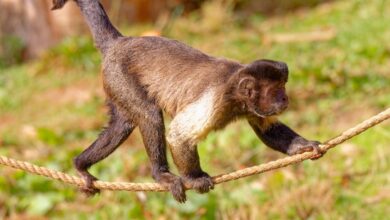What Exactly is a “Quasi-Lunar Moon”? Defining Earth’s New Companion

For centuries, humanity has gazed up at the night sky, finding comfort and wonder in the steadfast glow of our Moon. It’s a celestial companion we’ve explored, written poems about, and even landed on. For most of us, the idea of Earth having *another* moon, even a temporary one, seems like something straight out of science fiction. Yet, the cosmos has a knack for surprising us.
Imagine this: it’s the 1960s. The space race is in full swing, and humanity is meticulously planning its first audacious leap to our familiar, faithful Moon. Unknown to us then, another celestial traveler was quietly approaching Earth, destined to become a long-term, if somewhat unconventional, companion. This isn’t a new object that just sailed into our neighborhood; rather, it’s an asteroid that has been performing an intricate, gravitational dance with our planet for decades – and astronomers have only recently fully appreciated its unique status.
We’ve now officially acknowledged Earth’s “latest” quasi-lunar moon, an object that has been orbiting the Sun in near-synchronicity with Earth since the 1960s. It’s a remarkable testament to the subtle, ongoing discoveries happening right in our own cosmic backyard, reminding us that even in a seemingly well-mapped solar system, there are always new layers of understanding to uncover.
What Exactly is a “Quasi-Lunar Moon”? Defining Earth’s New Companion
The term “quasi-lunar moon” might sound a bit complex, but let’s break it down. When we think of a moon, we typically envision a natural satellite gravitationally bound to a planet, orbiting it directly. Our Moon is the quintessential example, locked in orbit around Earth. However, a quasi-lunar moon, or more accurately, a quasi-satellite, operates a little differently.
A quasi-satellite doesn’t orbit Earth in the traditional sense. Instead, it orbits the Sun, just like Earth does. But here’s the crucial twist: its orbit is remarkably similar to Earth’s, and it stays relatively close to our planet throughout its journey. It’s as if it’s “following” Earth, influenced by our planet’s gravity, but never quite captured into a stable, direct orbit around us. Think of it less like a dog on a leash and more like a talented dancer whose movements are synchronized with another’s, even though they’re not physically touching.
The gravitational pull of both the Sun and Earth interact in a delicate balance, creating a peculiar orbital dance. From Earth’s perspective, a quasi-satellite often appears to loop around us, tracing an arc that can look like an elongated kidney bean or a horseshoe. It’s a gravitational ballet, where Earth subtly nudges the asteroid’s path, keeping it in our vicinity for extended periods, even as the Sun remains its primary gravitational master.
The Curious Case of 2023 FW13: An Unsung Companion for Decades
The specific object we’re talking about, recently reclassified as a quasi-lunar moon, is an asteroid designated 2023 FW13. While its formal recognition as a quasi-satellite is recent, its presence in Earth’s cosmic neighborhood is anything but new. Astronomical observations indicate that this asteroid has been performing its unique orbital dance with Earth since at least 1960. Yes, for over six decades, this small rock has been a silent companion, a subtle echo of our planet’s journey around the Sun.
Imagine that: as NASA was sketching out mission profiles for Apollo 11, and we were all collectively holding our breath for humanity’s first steps on the Moon, 2023 FW13 was already there, doing its own thing, largely unnoticed in its peculiar orbital rhythm. It’s a stark reminder of how much goes on unseen in the vastness of space, even in our immediate vicinity.
2023 FW13 is not particularly large, estimated to be around 10 to 20 meters (30 to 60 feet) in diameter – a far cry from our Moon’s immense scale. Its orbit is relatively stable for this type of object; scientists predict it will continue its quasi-satellite relationship with Earth for at least a few more centuries, potentially until around 3700 AD. Its discovery highlights the constant vigilance of astronomers, who are not only looking for new objects but also refining our understanding of those already observed.
More Than Just a Rock: Why Does it Matter?
So, why should we care about a small asteroid that’s been hanging around for decades? The significance of 2023 FW13 and other quasi-satellites extends beyond mere novelty. These objects provide invaluable insights into several key areas:
- Orbital Mechanics: Studying these complex, dynamic orbits helps us better understand gravitational interactions between celestial bodies. It’s like a cosmic laboratory, allowing us to test and refine our models of how planets and asteroids move through space under the influence of multiple gravitational forces.
- Near-Earth Objects (NEOs): Quasi-satellites are a subset of NEOs. Understanding their behavior and trajectories is crucial for planetary defense. While 2023 FW13 poses no threat to Earth, monitoring such objects allows us to develop better detection and prediction methods for potentially hazardous asteroids.
- Solar System Formation: These objects are remnants from the early solar system. Their composition and orbital characteristics can offer clues about the conditions and processes that shaped our planetary neighborhood billions of years ago.
Earth’s Expanding Celestial Entourage: A Look at Other Quasi-Satellites
It’s important to note that 2023 FW13 isn’t a singular anomaly. While it’s the latest to be officially classified and extensively studied, Earth has other known quasi-satellites and temporary companions. Perhaps the most famous example prior to this discovery was 3753 Cruithne, often dubbed “Earth’s second moon” in popular science, which also has a horseshoe-like orbit that keeps it close to Earth without directly orbiting us.
These objects are dynamic. They drift in and out of their quasi-satellite relationships with Earth, some staying for decades, others for centuries, before their orbits perturb and they move on. This constant flux underscores the dynamic nature of our solar system and the ongoing cosmic ballet that plays out on scales both grand and incredibly subtle.
The discovery and ongoing study of objects like 2023 FW13 serve as powerful reminders of the endless wonders of space exploration and astronomical observation. They highlight that even in our own cosmic backyard, there are still layers of complexity and beauty waiting to be unveiled. Our understanding of the universe is constantly evolving, challenging our assumptions and expanding our horizons.
A Deeper Connection to the Cosmos
The revelation that Earth has been accompanied by this quiet quasi-lunar moon for over six decades offers a profound perspective. It’s a subtle, ongoing connection to the greater cosmos that unfolds just beyond our immediate perception. It reminds us that our planet, far from being an isolated sphere, is intricately linked to a vast network of celestial mechanics.
As we continue to push the boundaries of space exploration and peer deeper into the universe, these “local” discoveries are just as exciting and vital. They enhance our understanding of our own planetary home, its gravitational sphere of influence, and the myriad objects that share its journey around the Sun. Every such discovery is a testament to human curiosity and our relentless pursuit of knowledge, deepening our connection to the grand, unfolding story of the cosmos.





